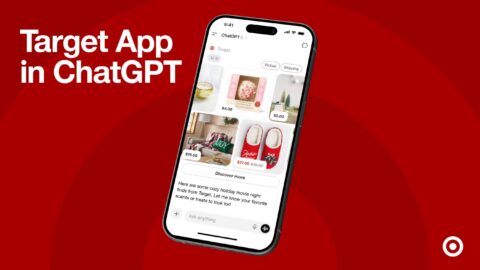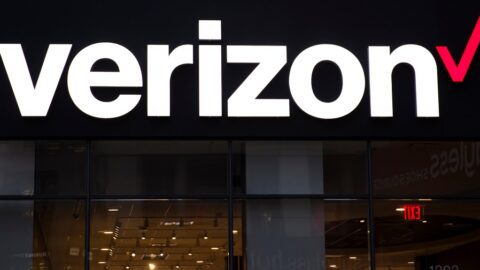By Steve Latham, CEO, Spur Interactive
For more than a year I’ve been advising clients on how to use Twitter as a marketing platform. Surprisingly, it seems that most brand marketers still don’t get it. With the goal of doing my part to help the industry master this channel, I’m sharing my best practices for Twitter Marketing. While these may not be comprehensive, they will provide you with 90% of what you need to be proficient at building your brand via Twitter. In order of priority – here is my list. Enjoy!
1. Interesting and Engaging Content- While Tweeting is easy, it’s important that you do it right, starting with a solid content strategy. Content recommendations include:
- Based on approved content guidelines, create Tweets that are engaging and relevant to target audiences. It should be easy for potential followers to see that your tweets are valuable and worth reading.
- Write tweets that will be shared. Rather than simply posting links, introduce links with compelling copy that encourage clicks.
- Allow time to pass between each tweet (at least 15 minutes) for several reasons: 1) no one likes to have their dashboard of tweets dominated by one account, 2) if someone is not watching they are likely to miss them, 3) spreading them out demonstrates consistency that yields brand benefits.
- Limit Tweets to 120 characters so they can be easily re-tweeted without exceeding the 140-character limit. See “120 is the new 140″ from @BrianSolis for more tips.
- Leverage real-time search by prominently including buzzwords that will picked up by Google, Bing and other search engines.
For more on Content Marketing check out @juntajoe and his blog.
2. Remember! Engagement = Listening + Responding- Social media is about interacting, and you can’t do that if you’re not listening. In addition to listening for your brand mentions, you need to keep an eye on what your network is tweeting about and participate in the discussion. Here are some tips:
- Use tools to track when your profile or brand is being mentioned on Twitter. Tools include www.Search.Twitter.com as well as the SM monitoring tools mentioned previously.
- Use the native search feature in your Twitter management tool to follow topics that are of importance to you. For example, I have a search column in Hootsuite for “Social Media Strategy“. This is how I keep up to date on the latest tweets on this subject.
- When your brand is being mentioned in a positive way, RT the message, follow and recognize the person who tweeted about you.
- Acknowledge mentions. Monitor when your Twitter account name is mentioned and RT to thank, and/or acknowledge those who are mentioning you.
- Build credibility and goodwill with your followers by re-tweeting (RT) posts that will be of interest to your audiences. If you RT a follower’s post, they may acknowledge the RT to their followers, thereby promoting you in the process
- When your brand is being mentioned in a negative way, you can either 1) respond, or 2) ignore it. If you choose to reply, consider the risks, given the nature of their tweet, their motives and their objectives. A confrontational response is rarely successful. If you want to address a customer complaint, ask them follow you so you can then send a DM and take the conversation offline. As mentioned above, ignoring the mention is often best. You can inadvertently cause much greater damage if you engage in a public scuffle with a crazy person.
3. Building a network of followers- Without a network there is no reach, and without reach there is no ROI. Contrary to most hopes and beliefs, networks do not build themselves; if you want followers, you have to work on it. The good news is that with Twitter, the process is relatively easy. When you follow someone, they will receive an email notification. Currently, the normal etiquette is to respond by following the person who followed you. Judicious tweeters will read your latest tweets to determine if your content is worth following. If the content is good, most will follow you back — at least for a while.
- Start with your own employees, partners, vendors and community. Announce your new Twitter account and ask employees to follow and share with others.
- Identify the top 50 influencers in your category on Twitter as these people can provide visibility and credibility for your brand among their networks of followers. Use www.TweepSearch.com, www.MrTweet.com and www.Twollow.com to find users with shared interests. Look for those who have large numbers followers and are active in sharing their opinions with the masses (aka influencers).
- Follow people who follow your Influencers.
- Include a link to your twitter account in email, on your site, on all social networking sites and in all correspondence.
- Remember to maintain a favorable ratio of Following / Followers of +/- 1:1. While building your network, take time to check out who you are following that is not following you back at www.FriendorFollow.com. For each person who is not following you, you can either: 1) stop following for good, or 2) unfollow and then re-follow. If they do not respond on your 2nd attempt to reach out, you may consider unfollowing them for good.
- Be careful with TwitterBots (AutoFollow) tools. As you’ll quickly learn, building a network takes time. If you are interested in using an network-building service, make sure you use a credible tool or service that follows Twitter best practices. Failure to do so will result in suspension of your account. While there are a lot of cheap bots that to avoid, there are some services that work (full disclosure: we offer one that works well). Before you buy, do your homework and ask for references.
4. Managing Multiple Accounts- Many marketers maintain at least two types of Twitter accounts – one for their company and one for their personal tweets. Twitter management tools (my favorite is HootSuite) allow you to manage multiple profiles. Since many may follow your personal and work accounts, make sure you don’t tweet the same content at the same time. Another common practice is to RT your company tweets from your personal account. Remember that many will follow your brand and personal profiles, so make sure you space them out (no simultaneous tweeting!)
Common Twitter Mistakes to Avoid: Here are some common content mistakes many marketers make when Tweeting:
- It’s all about me!!! Too many still use social media a megaphone vs. a telephone. Success requires that you listen, engage and interact with others in the community.
- Using social media as a press release distribution platform. While there are sites that are great for press releases, this should be the exception, not the norm. As noted, conversations require an exchange of information. If all you do it tell the world about your firm, audiences will grow tired of listening.
- Boring content. You should always seek to include and introduce links to video, articles, audio and other media that will be interesting to audiences.
- Vague content. Doesn’t it bug you when someone posts a link with a cryptic introduction? Make it easy for followers to see what you are presenting to them. Introduce your links.
- Sharing information that is confidential, sensitive or not appropriate. This is especially important if you work for a public company or in a regulated, hyper-competitive or litigious industry.
- Drawing unnecessary attention or being overly defensive when addressing negative comments. Sometimes it’s best to ignore the haters. If you respond, you may make something big out of a small issue, which may be exactly what they want you to do.
Steve Latham started Spur Interactive to help companies better utilize the Web as a means for growing their business. Since starting the company in 2002, Steve has developed and implemented successful online strategies for FedEx Kinko’s, Southwest Airlines, Amegy Bank, among others. Steve is the founder and President of the Houston Interactive Marketing Association and an active Board member of the Houston Advertising Federation and Prepared 4 Life. Steve is a co-founder and Board member of the Houston Technology Center, and a member of the Technology Executive Club of Houston, the Mayor’s Economic Task Force and the Center for Houston’s Future 2005 Leadership class. Steve blogs frequently on the Spur Interactive blog and is a featured blogger for Online Marketing Connect.












